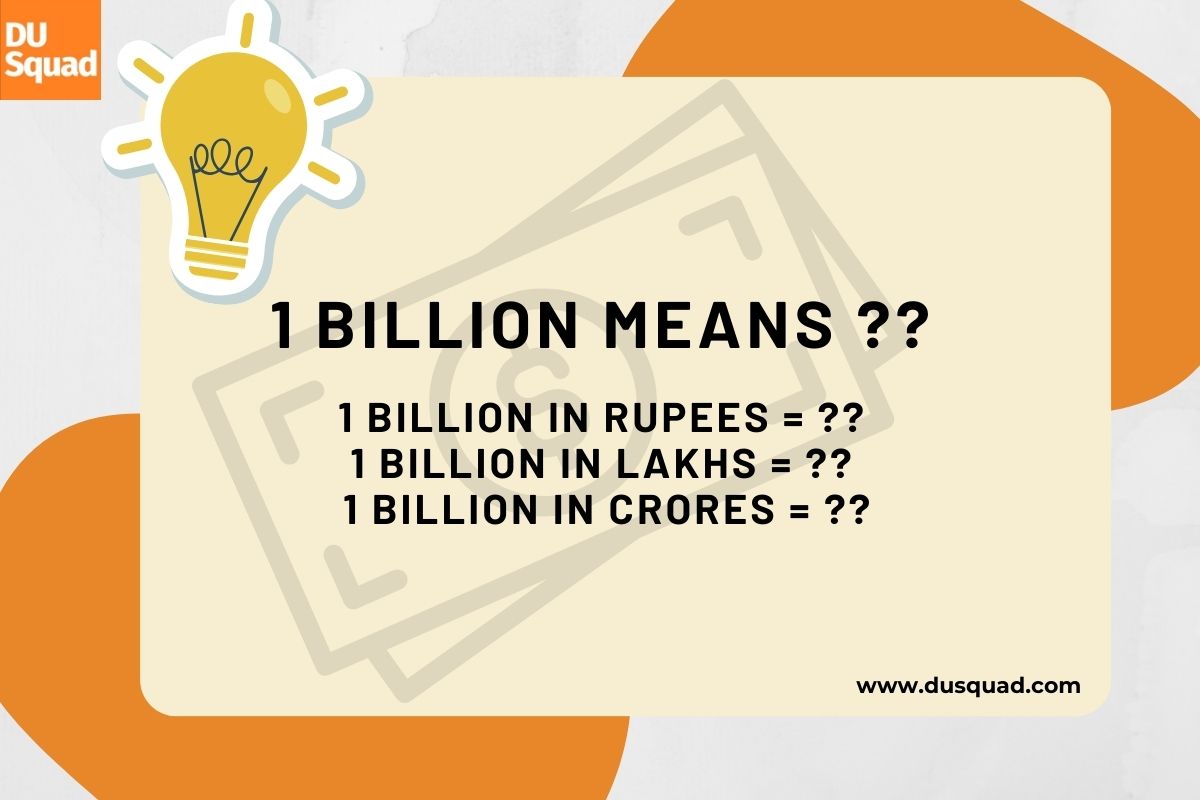Many students find the large numbers intimidating. Still, there is no need to be afraid of such large numbers like sometimes they can get confused about what 1 billion means or what 1 million means and how to convert 1 billion into rupees. What is crucial is that students grasp the ability to identify and understand these significant numerical values. To achieve this, they should be well-versed in the principles governing the recognition of large numbers, including familiarity with two distinct systems of place value: the Indian system and the International System.
It is essential that students become proficient in both systems to facilitate the identification of large numbers. Furthermore, students should be adept at converting international numbers into the Indian system, recognizing the distinct nomenclature associated with each.
For instance, one billion means 10,000 lakhs in Indian currency and is written as 1,000,000,000, characterised by nine zeros. Students can use the counting of zeroes as a mnemonic technique to remember large numbers, such as one million with its six zeros, written as 1,000,000. By employing this approach, students can easily commit various significant numbers to memory.
1 Billion Means in Rupees
In the realm of numerical notations, one billion means 10,000 lakhs when expressed in Indian rupees. This is an absolute quantity, denoted by the natural number 1,000,000,000, signifying a billion. Just before the monumental billion, we find the number 999,999,999, while immediately succeeding it, there stands 1,000,000,001.
The concept of place value plays a pivotal role in mathematics, allowing us to articulate the value of digits within a number. Two distinct systems, the Indian System and the International System, facilitate this articulation. Place value charts prove instrumental in deciphering the positional values of digits within numbers, enabling us to extend numbers in their general form.
In these systems, place values are organised from right to left, commencing with the unit location (the one’s place) and subsequently advancing to tens, hundreds, thousands, and so forth. Now, let’s explore the value of one billion in the context of the Indian system of place value when represented in Indian rupees, along with the expression of 1 billion dollars in rupees through words. Additionally, we will delve into the positional value charts for both the Indian and International systems.
1 Billion Means in Indian Number System
The International System employs a different numerical representation, and when we convert 1 billion using the Indian System, it translates to 1,000,000,000 Rupees. To break this down further, we can express one billion as 10,000 Lakhs, with 1 Lakh being equivalent to 1,00,000.
1 Billion means = 10,000 Lakh rupees
Therefore, one billion in Lakhs equals 10,000 Lakhs, which essentially means that one billion Lakhs is equivalent to ten million Lakhs. In simpler terms, one billion can also be seen as 100 crores, as one Lakh equates to 1,00,00,000. This alternate perspective highlights the unique way in which the Indian System quantifies large numbers, shedding light on the immense scale involved.
Converting 1 Billion in Lakhs
To convert any billion value to lakhs, you can multiply it by ten thousand. For example, if you have to convert 7 billion, you can simply multiply 7 by 10,000 lakhs, which equals 70,000 lakhs. Therefore, 7 billion is equivalent to 70,000 lakhs.
In terms of currency conversion, one billion dollars is equivalent to 73,80,00,50,000 Indian Rupees. This conversion rate provides an understanding of the substantial difference in the value of a billion dollars when expressed in Indian Rupees, illustrating the vast economic scale involved.
1 Billion = 10,000 Lakhs
7 Billion = (7 x 10,000) Lakhs
7 Billion = 70,000 Lakhs
Converting 1 Billion in Crores
To convert a billion value to crores in the Indian numbering system, you simply multiply the billion value by 100 crores. For example, if you have 9 billion, you can convert it to crores by multiplying 9 by 100 crores, which equals 900 crores. In essence, 9 billion is equivalent to 900 crores. This approach can be applied to convert any billion value into various Indian numerical units. It includes lakhs, crores, and so on, making it a straightforward method for expressing large figures in the Indian numbering system.
1 Billion = 100 crores
9 Billion = (7 x 100) crores
9 Billion =900 crores
What Does Conversion of 1 Billion to Rupees Mean?
Place value is an important notion in both the Indian and International number systems. The Indian system establishes a distinct hierarchy by assigning place values to the digits. This includes Ones, Tens, Hundreds, Thousands, Ten Thousand, Lakhs, Ten Lakhs, Crores, and so on.
The International system, on the other hand, uses a different order. Here place values increase from Ones to Tens, Hundreds, Thousands, Ten Thousand, Hundred Thousand, Millions, and above. For example, one billion in the international system is equivalent to 100 crores in the Indian system. These various place value schemes demonstrate how different cultures and nations represent numbers in different ways.
1 billion means = 1,000,000,000 rupees,
1 lakh = Rs. 100000,
1 billion = 10,000 lakhs.
1 billion = 100 Crores
International Place Value System
| Ones | ||
| Ones | Tens | Hundreds |
| 1 | 10 | 100 |
| Thousands | ||
| Thousands | Ten Thousand | Hundred Thousand |
| 1000 | 10,000 | 100,000 |
| Millions | ||
| One Million | Ten Million | Hundred Million |
| 1000,000 | 10,000,000 | 100,000,000 |
| Billions | ||
| One Billion | Ten Billion | Hundred Billion |
| 1000,000,000 | 10,000,000,000 | 100,000,000,000 |
Conclusion
Understanding large numbers can be intimidating for students. But it’s essential to grasp the concepts of place value in both the Indian and International Systems to ease this challenge. For instance, 1 billion means 10,000 lakhs in Indian rupees, written as 1,000,000,000. Breaking it down, one billion can also be seen as 100 crores, with one lakh equating to 1,00,00,000. Converting one billion to lakhs involves multiplying it by 10,000, and to crores, you multiply it by 100. This clear breakdown allows us to appreciate the vast differences in value between currencies. It emphasises the significance of place value systems in comprehending large numbers. In essence, mastering these systems enables students to conquer their fear of substantial numerical values.















